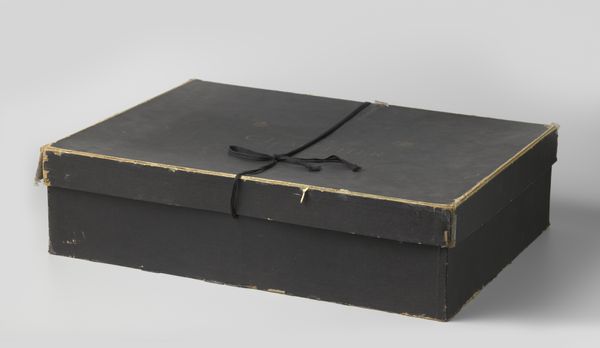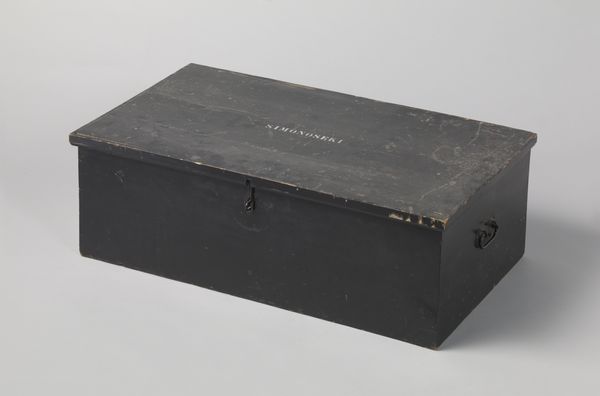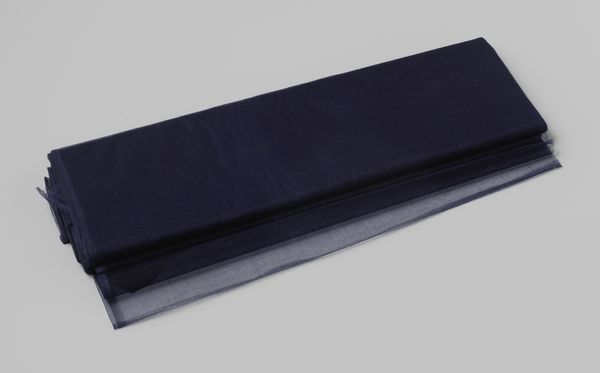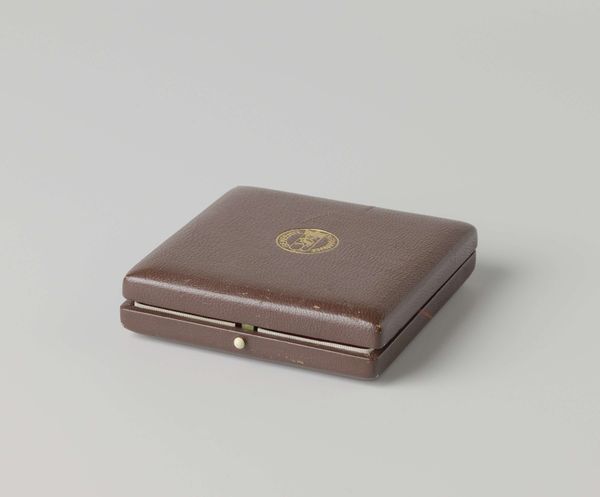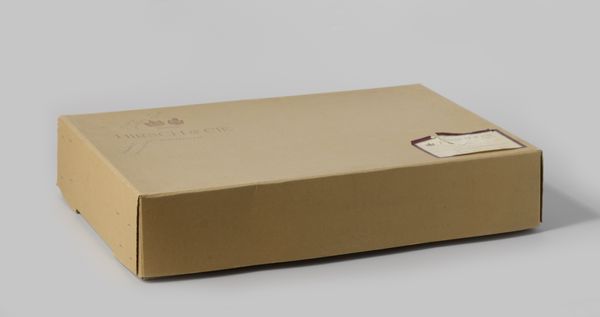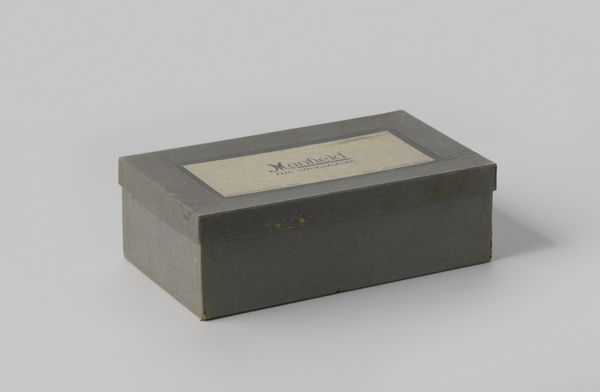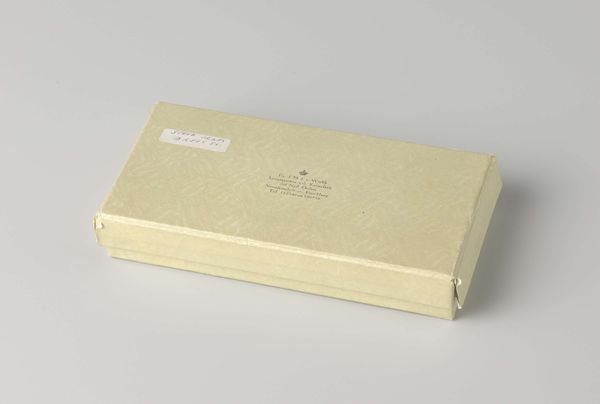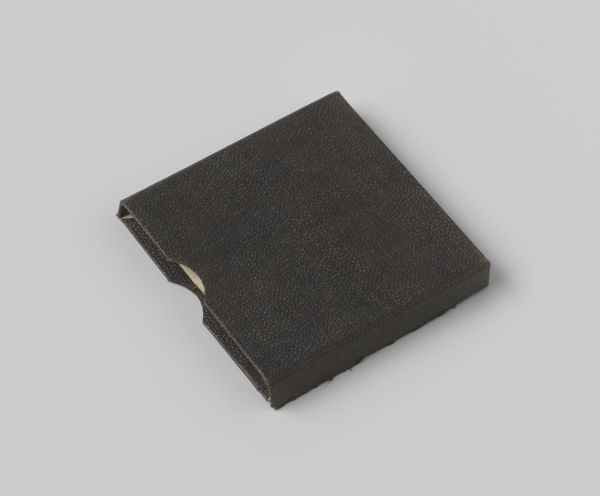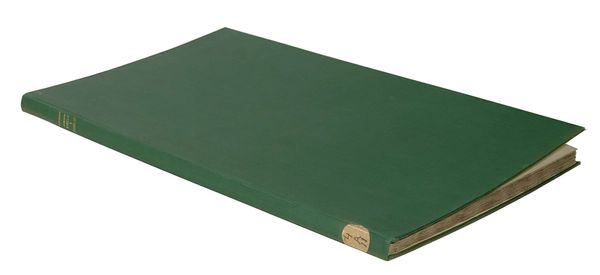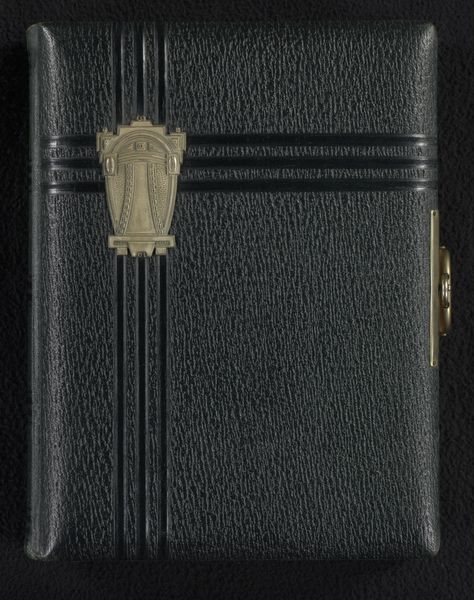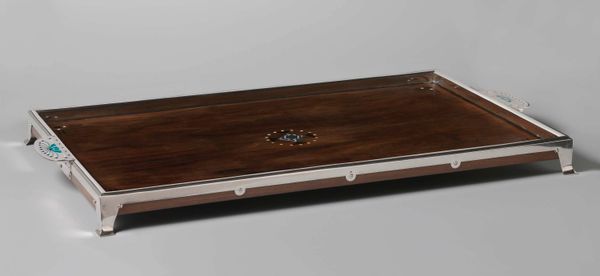
Cassette behorend bij een servies bestaande uit twaalf koppen en schotels, beschilderd met vogels en violen 1913
0:00
0:00
ceramic
#
still-life-photography
#
ceramic
#
product photography
#
decorative-art
Dimensions: height 11.0 cm, width 48.0 cm, depth 32.5 cm
Copyright: Rijks Museum: Open Domain
Editor: This photograph depicts the case for a porcelain tea set made in 1913, featuring violets and birds, created by N.V. Haagsche Plateelfabriek Rozenburg. The muted colors evoke a sense of understated elegance, and the silver latches suggest concealed preciousness. How do you interpret the significance of the container itself, rather than focusing on its contents? Curator: The box itself speaks volumes. The imagery in this presentation emphasizes enclosure and protection. Think of a reliquary. Though we cannot see the porcelain it is designed to house, its function is inseparable from its beauty; not just as decorative art, but functional art for rituals surrounding tea and connection. Consider that even today, nesting materials such as cardboard are perceived to convey that contents of this item are handled with care. Editor: That’s interesting – so the container becomes part of the story, not just a neutral object? Curator: Precisely. The violets and birds suggest themes of delicacy, transience, and beauty, which are given extra significance by what protects the imagery. A precious or rare container in the Rozenburg presentation emphasizes social class, as well. Is this protective quality solely physical? Editor: That makes me wonder what the birds and flowers symbolized to people in 1913. Curator: They represent the enduring beauty of the natural world and the comforts it provides. This is memory materialized. This is preservation as an art form. Editor: So the presentation functions as cultural preservation? I never would have thought of it that way. Curator: Consider how visual forms transmit shared knowledge and cultural continuity. Editor: That really changes how I see the piece. It is no longer only a photograph, but an embodiment of care. Curator: And in turn, culture's continuous need to represent safety through design.
Comments
No comments
Be the first to comment and join the conversation on the ultimate creative platform.

